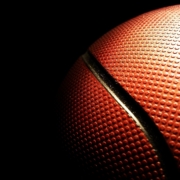THE FATHER TIME EFFECT
By Scott Mincher
During the NFL’s wildcard weekend the young quarterbacks showed flashes of greatness, but it seems that almost every year there are at least one or two all-time greats battling it out in an attempt to add to their championship resume. It was no different this year and despite their best efforts you have to wonder if Brees and Brady’s best shot at another Super Bowl ring is in the rearview mirror. It certainly brings up an interesting topic of discussion and something in sports I’ve always found to be tantalizing. At what age do a player’s skills start to diminish? How old is too old and does hanging on to the game for too long taint a superstar’s legacy?
These questions can’t help but make me think of Michael Jordan my favorite athlete growing up as a kid in Campbell Ohio. It still feels weird picturing MJ in that Washington Wizards jersey and even though I owned a Jordan Wizards jersey as a kid It was the first first time since I could vividly remember in my earliest days of watching sports that I debated whether watching him felt the same as it did when he was king of the Bulls dynasty in the ’90s. Don’t get me wrong like any basketball fan I always was enamored with watching Jordan hoop. But the Washington years just felt different. As a kid when you see something or someone as your favorite or the best It’s hard to not be partial and to admit that that person or thing has weaknesses or flaws just like it can be in some ways as an adult. For the first time in MJ’s career, he looked human. That’s not to say that he still wasn’t a pretty damn good player with the Wizards. Despite an injury-plagued 2001-02 season, he led the team in scoring (22.9 ppg), assists (5.2 APG), and steals (1.42 SPG). However, torn cartilage in his right knee ended Jordan’s season after only 60 games, the fewest he had played in a regular-season since playing 17 games after returning from his first retirement during the 1994–95 season. He averaged 24.3 points, 5.4 assists, and 6.0 rebounds, and shot 41.9% from the field in his 53 starts. A lot of NBA players would do anything for a stat line like that, but because Jordan always wanted to be the best at everything the bar spectators had for him and the bar he set for himself was higher than the sky and at the time because of that it resulted in many fans viewing Jordan’s tenure with Washington as a decent one, that was miles away from the legendary Chicago dynasty leader that so many watched. At that time I think every NBA fan wanted to see if Michael would remain the best player in the world and his time with the Wizards still had great moments that were a must-watch for even casual sports viewers and although he might not have been quite the same Mike, he was still a mega catch and that’s extraordinary!
Another guy that captivated the hearts of the sports world was Brett Favre. Favre was a 9x Pro Bowler and Super Bowl XXXI champion quarterback with the Green Bay Packers but, in his last years played with the New York Jets and Minnesota Vikings. His tenure in Green Bay produced its fair share of iconic moments and with many wondering what the late 30’s QB had left in the tank his season with the Jets in 2008 started well. in Week 4 of the 2008 season, he threw six touchdowns against the Arizona Cardinals, a personal best and one shy of the NFL record. This performance led to him being selected as the FedEx Air Player of the Week. By Week 12, the Jets had compiled an 8–3 record, including a win over the previously undefeated Tennessee Titans. However, the Jets lost four of the last five games of the season, including the final game against AFC East divisional opponent Miami, who had acquired quarterback Chad Pennington after he was released from the Jets to make room for Favre. In those five games, Favre threw eight interceptions and only two touchdown passes, bringing his season total to twenty-two of each. Favre had complained of shoulder pain and had an MRI performed on December 29, 2008, which revealed a torn biceps tendon in his right shoulder. After the 2008 season had ended, in mid-January 2009, Favre told Jets General Manager Mike Tannenbaum, “it may be time to look in a different direction” regarding the quarterback position. On February 11, 2009, Favre informed the Jets that he was retiring after 18 seasons. He remained part of the Jets organization until April 28, 2009, when the Jets released Favre from his contract, thus allowing him to sign anywhere he wanted. By May 2009, he was officially cut from the Jets Reserve/Retired list. After an offseason of speculation, Favre officially signed with the Minnesota Vikings on August 18, 2009. He would go on to have a landmark season in which he surpassed former Vikings defensive end, Jim Marshall, for consecutive starts at one position, with 291, became the first quarterback in NFL history to defeat every one of the league’s 32 franchises since the NFL first expanded to 32 franchises in 2002, surpassed Dan Marino’s previous record for four-touchdown games, and was named to his 11th Pro Bowl. The Vikings finished 12–4 and advanced to the NFC Championship game, ultimately losing in overtime to the eventual Super Bowl XLIV champion New Orleans Saints. Despite the loss, Favre set playoff records for pass completions and passing yards previously held by Joe Montana. The next year during the 2010 season Favre achieved two milestones. He threw for his 500th touchdown and 70,000th yard against the New York Jets. On November 7, 2010, in a game against the Arizona Cardinals, Favre threw for a career-high 446 yards while rallying the Vikings from a 14-point fourth-quarter deficit to win in overtime. On December 13, 2010, due to a sprained shoulder, Favre was marked inactive for the game against the New York Giants ending his consecutive regular-season start streak at 297. Favre started a total of 321 games including post-season appearances. On December 20, 2010, while playing the Chicago Bears outside at TCF Bank Stadium due to the collapse of the roof of the Hubert H. Humphrey Metrodome, Favre sustained a concussion after being sacked by Bears defensive end Corey Wootton. As a rattled Favre was helped to his feet by Vikings’ athletic trainer Eric Sugarman, he asked, “Suge, what are the Bears doing here?”. This would be his final appearance in an NFL game. Farve would later have some post-NFL health issues are another effect from playing a contact sport, Not to mention him playing it into his 40’s.
Age will always have an impact on a player’s body and many times a negative one. But at the time many football experts argued that Farve’s first season with the Vikings at age 40 was the best of his career and it makes you wonder if like what Jordan was able to do in more than a few games with Washington when he really shined If some superstars in sports at times do get better with age. No one knows how running back greats Jim Brown and Barry Sanders would have fared if they decided to play another 5 years or so and not retired when they were playing at an elite level, and It seems somebody like Tom Brady in his age 42 season is as savvy as ever, even if some of his physical skills have started to diminish. The bottom line is I believe that some of the brightest stars in sports have shown that even if father time is undefeated you’re only as old as you feel and if an athlete can’t do things quite the same at forty as they did when they were twenty it doesn’t mean that peak level performance is off the table in other aspects of their game. Let’s face it no sane football fan would turn down being able to watch Jim Brown or Barry Sanders in the modern NFL regardless of what their age would be.
Sports icons joining new teams may feel weird and take some time to get used to, especially if they’ve been with one team for most of their career, but Fave will always be a Packer, just like MJ will always be a Bull and weather they or anybody before or after them tried or tries to play for a couple of years or a couple of decades just try to enjoy the show as much as possible because even the best of the best will someday have to deal with the father time effect.



